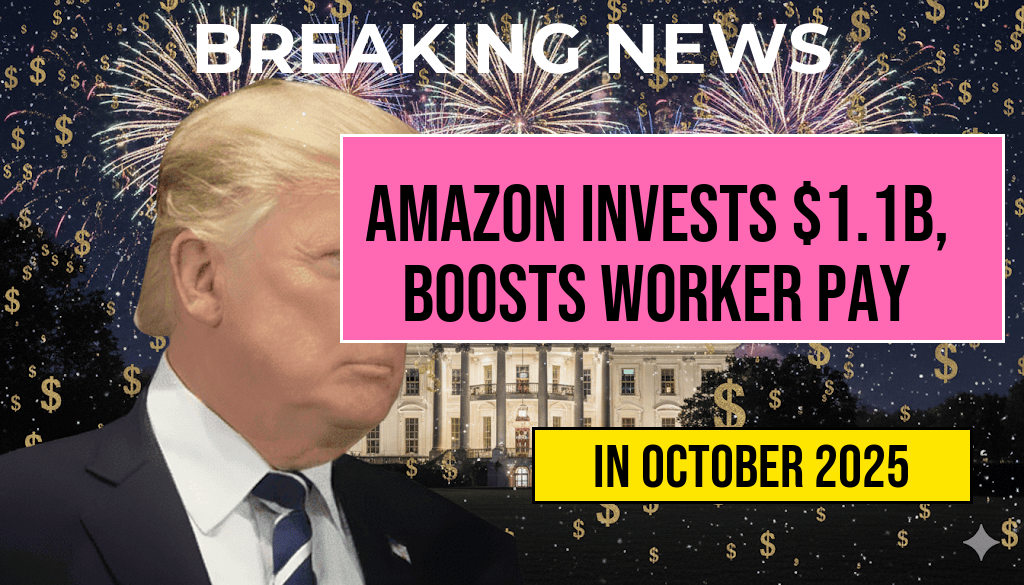Amazon announced a significant investment of $1.1 billion into its fulfillment network, a move that has already begun to reshape the company’s labor costs and compensation strategies. As part of this initiative, the retail giant has increased wages for its fulfillment workers, pushing the average pay above $23 per hour. This development marks a notable shift in Amazon’s approach to employee compensation, reflecting both competitive pressures within the logistics industry and a broader effort to improve working conditions and retention in an increasingly tight labor market. The company’s decision to allocate such a substantial capital infusion underscores its commitment to maintaining operational efficiency while addressing worker satisfaction amid ongoing debates about wages and workplace standards in the e-commerce sector.
Details of Amazon’s Investment and Wage Increase
Amazon’s recent capital deployment involves upgrades to warehouse infrastructure, automation technology, and employee benefits, aimed at boosting productivity and ensuring faster delivery times. The investment also directly correlates with a rise in fulfillment worker wages, which now average over $23 per hour. This figure represents a considerable increase compared to previous years, aligning Amazon’s pay scale with or above industry standards for fulfillment roles in the United States.
Impacts on Workforce Compensation
- Average hourly pay for fulfillment workers now exceeds $23.
- Wages vary by location, with some facilities offering starting rates above $20 per hour.
- Additional benefits include performance bonuses, healthcare, and tuition reimbursement programs.
This wage enhancement aims to attract and retain a skilled workforce amid a labor market that has seen heightened competition from other logistics and retail companies. Amazon’s move also responds to ongoing pressure from labor advocates and policymakers advocating for better wages and working conditions in the warehousing sector.
Industry Context and Competitive Landscape
Amazon’s investment and wage hike come at a time when the logistics industry is experiencing unprecedented growth and scrutiny. According to data from the Wikipedia entry on logistics, the sector has become a critical component of the global economy, with fulfillment centers acting as the backbone of e-commerce giants like Amazon, Walmart, and FedEx.
| Company | Average Hourly Wage | Additional Benefits |
|---|---|---|
| Amazon | $23.50 | Healthcare, tuition reimbursement, bonuses |
| Walmart | $15.50 | Medical coverage, employee discounts |
| FedEx | $20.00 | Health insurance, retirement plans |
This table illustrates Amazon’s competitive positioning regarding wages, which now surpasses some traditional retail and logistics giants. The wage increase is seen as a strategic move to enhance employee morale and reduce turnover, which has historically been a challenge for fulfillment centers operating under high-demand conditions.
Broader Implications for the E-Commerce Sector
Amazon’s bold investment signals a potential shift in the broader landscape of e-commerce and logistics employment. Industry analysts suggest that competitive wages could set a new standard, prompting other corporations to reevaluate their compensation packages. Labor market data from Forbes indicates that fulfillment jobs are increasingly viewed as stable and well-compensated employment opportunities, especially with automation and digital fulfillment strategies evolving rapidly.
Worker Satisfaction and Operational Efficiency
Enhanced pay and benefits are expected to improve worker satisfaction, which directly influences productivity and operational reliability. Amazon has historically faced criticism over working conditions, but recent investments suggest a strategic shift towards fostering a more committed workforce. Studies from workplace research institutions highlight that higher wages correlate with decreased absenteeism and increased engagement, ultimately benefiting the company’s bottom line.
Future Outlook
As Amazon continues to pour resources into its fulfillment network, the company’s wage strategy may serve as a benchmark within the industry. Labor experts predict that sustained investment could lead to a cycle where wages and benefits are increasingly aligned with the rising costs of living and the demands of a competitive labor market. For workers, this translates into more stable and lucrative roles, potentially reshaping the expectations for fulfillment jobs across the country.
For Amazon, the initiative underscores a strategic balance between operational excellence and workforce investment, crucial for maintaining its dominance in the fast-paced world of e-commerce. As the sector evolves, such investments could define the standard for employee compensation, driving broader industry reforms and setting new expectations for corporate responsibility in the logistics space.
Frequently Asked Questions
What is the total investment Amazon has made to improve fulfillment worker compensation?
Amazon has invested 1.1 billion dollars toward increasing pay and benefits for its fulfillment workers.
How has Amazon’s investment impacted fulfillment worker wages?
The investment has led to an average pay exceeding twenty-three dollars per hour for fulfillment workers.
What is the significance of Amazon’s investment in fulfillment centers?
This significant investment demonstrates Amazon’s commitment to improving working conditions and attracting talent to its fulfillment centers.
Are there other benefits for Amazon’s fulfillment workers besides increased pay?
While the article emphasizes pay increases, such investments often include enhanced benefits, improved working conditions, and additional support programs for employees.
How does Amazon’s pay compare to industry standards?
With an average wage exceeding twenty-three dollars per hour, Amazon’s pay rate is competitive within the logistics and fulfillment industry, potentially setting a new benchmark for compensation.






